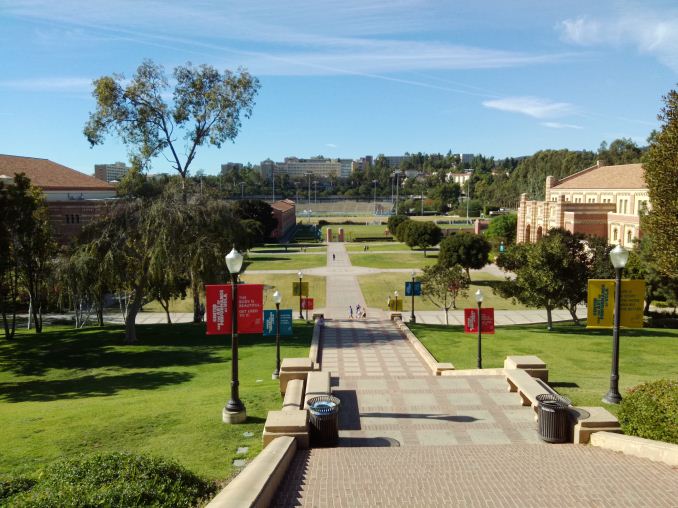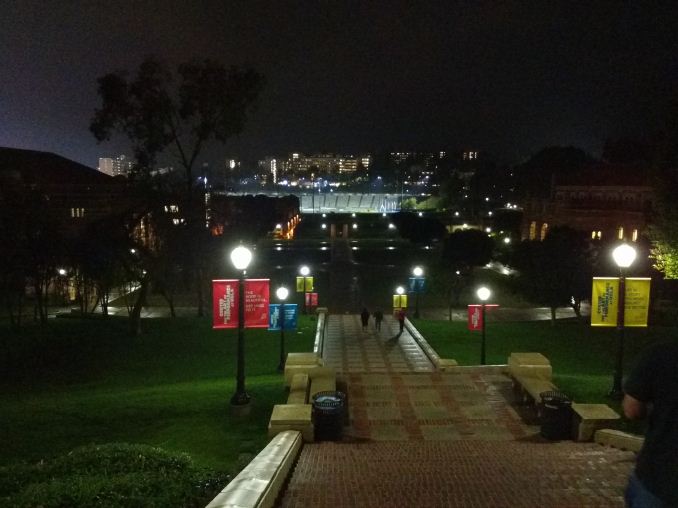The Google Nexus 9 Review
by Joshua Ho & Ryan Smith on February 4, 2015 8:00 AM EST- Posted in
- Tablets
- HTC
- Project Denver
- Android
- Mobile
- NVIDIA
- Nexus 9
- Lollipop
- Android 5.0
Camera
In the case of tablets, cameras have become increasingly important. While it’s still a bit awkware to take photos and video with a tablet, there is still value to having decent cameras on a tablet. For the front-facing camera, it’s pretty clear that there is a lot of value to be had here as the tablet can be a good tool for video conferencing in lieu of a bulky laptop. The rear camera can also have value, but mostly for taking a photo of a whiteboard or simply when opportunity dictates. To fulfill these duties, the Nexus 9 has been outfitted with a rather standard set of cameras. On the rear, we see an 8MP, 1/4 inch format sensor while the front-facing camera has a 1.6MP, 1/5 inch sensor. I’ve included a table of the full camera specs below in the interest of readability.
| Camera Specifications | |||
| Google Nexus 9 | |||
| Front Camera | 1.6MP | ||
| Front Camera - Sensor | OV9760 (1.75µm, 1/5") |
||
| Front Camera - Focal Length | 2.18mm | ||
| Front Camera - Max Aperture | F/2.18 | ||
| Rear Camera - Sensor | IMX219 (1.12 µm, 1/4") |
||
| Rear Camera - Focal Length | 3.097mm (33mm eff) | ||
| Rear Camera - Max Aperture | F/2.4 | ||
This is pretty much par for the course when it comes to tablets. The optics aren’t particularly remarkable in one way or another, as I haven’t noticed any obvious design issues in any of my test photos, and the focal length isn’t excessively long or short. The UI that comes with Google Camera in general is unremarkable as well. This isn’t a slight against it, but the fact that I don’t have anything significant to complain about is a good step forward from the past when the design of the camera UI was a significant friction point in the user experience.
The one issue that I’ve noticed is that the camera’s auto focus and capture speed are significantly worse than what I saw on the iPad Air 2. Unfortunately, it isn’t really possible to have standardized testing here as a tablet can’t be mounted to a tripod for testing. As there isn’t a custom ISP in the Nexus 9, it’s likely that the Tegra ISP isn’t up to scratch here as I noticed that AF speed is similar to what I saw on the SHIELD Tablet despite differing camera modules.
For the most part, there’s not much else to be said about the camera systems on the Nexus 9 as they aren’t quite as heavily focused as one would see in the smartphone space. All that’s left to do is test the cameras themselves.
In this basic test of daytime photo quality, we can see that HTC has done a reasonably good job of processing the image as noise is generally suppressed without an enormous loss of detail. However, there really isn't a lot of detail to speak of in this sensor. There's also a decent amount of dynamic range as there's detail in the shadows but there's no HDR mode to compensate in cases where there is insufficient dynamic range. HTC continues to cap the base ISO to 100, which seems to be a strange move in this situation as the shutter speed is more than high enough to drive the sensor gain even lower.
In this low light scenario, the Nexus 9 effectively falls flat on its face. With an ISO of 3200 and a shutter speed of 1/12s, there's effectively no detail past the first set of steps. Luminance noise is strong and present throughout the image, and color noise also has a tendency to creep in as well. Given the sheer size of the tablet, it's also hard to stably hold the tablet to take a photo despite the relatively fast 1/12s shutter speed. One should really avoid using this to take photos in low light unless there's no other choice.
In video, detail generally tends to be about the same as what one can find in photos, which means that daytime footage should have decent quality but low light rapidly reduces the quality as the sensor gain must increase. In the case of the Nexus 9, we see that video tops out at 1080p30 maximum with no slow motion available, and that the file is in a .3gp format instead of a standard mp4 that most are familiar with. The video itself is encoded with H.264 baseline at 14 Mbps, which is likely to be below the maximum that the encoder can support. There doesn't appear to be any significant level of stabilization in this case, which is a bit disappointing although not entirely surprising. There is also a lot of focus hunting throughout the video, which is quite distracting.
Overall, it seems that the camera on the Nexus 9 is an acceptable one for a tablet, although this would effectively be unacceptable on a high-end smartphone. The camera itself produces decent output in daytime but really suffers in low light due to the small pixel size, relatively narrow aperture, and small sensor. There are also a lot of issues with consistent and reliable auto focus, as it often takes multiple focus runs to get the camera to focus properly on even high contrast objects. Each focus run takes a significant amount of time as well, which hurts the shooting experience when combined with the somewhat long capture latency. I would avoid using this camera unless it is strictly necessary, although it isn't terrible as a camera for cases such as document scanning.
























169 Comments
View All Comments
cjs150 - Wednesday, February 4, 2015 - link
No microSD - no chance of me buying it.Tablets are designed to be portable so why do designers never consider the needs of people on the move who may not have access to the cloud (either at all or at prohibitive cost). With 128 mb MicroSD card I can store tons of music, movies, tv shows and watch when I like on holiday
Impulses - Wednesday, February 4, 2015 - link
USB OTG ftwR. Hunt - Thursday, February 5, 2015 - link
Hardly the same thing though.UtilityMax - Sunday, February 8, 2015 - link
They want you to pay royalties to store your stuff in the cloud. I agree that 16GB is somewhat limiting. Half of that space will be used by the OS and applications, with barely anything left for user's data. I'd go with the 32GB model at the very least.NotLupus - Wednesday, February 4, 2015 - link
What's the date today?smayonak - Wednesday, February 4, 2015 - link
Ryan, I noticed that the Nexus 9 offers always-on (screen-off) Google Now activation. I checked in CPUSpy (and other apps) and noticed that even when all cores are parked, this feature works, suggesting that NVidia may have included a custom DSP or third core for audio processing. The +1 core in NVidia's Tegra platform was apparently transparent to the operating system, because it never showed up in CPU activity monitor apps.If it is a custom DSP used for natural language processing, this would probably run afoul of Qualcomm's lock on the IP. Which might explain why NVidia never announced a third core (or DSP) in the Denver platform.
I'm not sure if it's just my imagination at work -- can you confirm or disprove (or speculate) on the existence of a third core? Supposedly Android 5.0 includes support for idle-state audio processing, but only if supported by the hardware. But it would seem hardware support would require some kind of low-energy state processing core. And nothing of the sort appears in NVidia's press releases.
By the way, thank you for the amazingly detailed and insightful review. You guys are amazing.
Andrei Frumusanu - Wednesday, February 4, 2015 - link
Always-on voice activation is done by the audio SoC and has no connection to the main SoC or any DSP. Qualcomm's voice activation is done via the audio chip.smayonak - Wednesday, February 4, 2015 - link
Thanks. I have no doubt that's true, but I can't track down a reference. Anandtech's own article on the subject refers to Motorola's implementation of idle-state audio processing as relying on the X8's low-power cores, dedicated to handling audio processing.Motorola's press release claimed that their X8 included proprietary "natural language" and "contextual" processing cores (which I thought were some kind of analog-to-digital audio-processing DSP, but may be wrong), which allowed for always-on activation of Google Now.
I can count the number of devices that support screen-off Google Now on one hand. The relatively small number of devices with this feature is perplexing. Or maybe no one advertises it?
toyotabedzrock - Wednesday, February 4, 2015 - link
While turning a GPU into a CPU is a great accomplishment then essentially built a CPU that seems designed to benchmark well but will stall endlessly on real world code.Anonymous Blowhard - Wednesday, February 4, 2015 - link
This article is soooo late, clearly you should have just thrown up a half-page blurb with a clickbait title and was shallow enough that it could have just been written hands-off from the tech specs./s
Great read as always. Good things are worth waiting for.